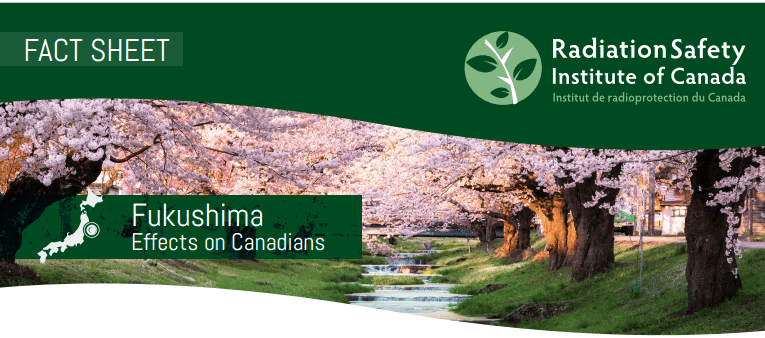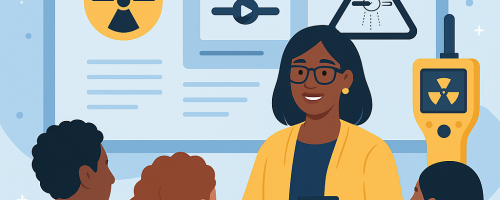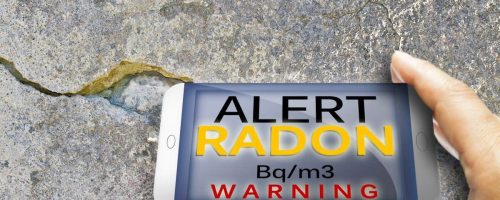WHAT HAPPENED ON MARCH 11, 2011?
A magnitude 9.0 earthquake struck on of the coast of Japan, creating an estimated 15-meter-tall tsunami that impacted Japan’s coastline within an hour after the earthquake. The water from the Tsunami ran inland as far as 10 km, resulting in catastrophic damage to cities and communities in its path.
The Fukushima-Daiichi power station, which is a Nuclear Power Plant operated by the Tokyo Electric Power Company (TEPCO), is located on Japan’s coast and was in the path of the Tsunami. Within minutes after the earthquake, the reactors at the plant were shut down in accordance with the safety procedures, however damage from the earthquake had caused the power plant to disconnect from the main Japanese power grid. Backup diesel generators at the plant provided power to cool the reactors after they had been shut down.
When the Tsunami struck the plant, the height of the wave far surpassed the 6-meter high seawall, resulting in a flood at the station. Flooding damaged the diesel generators, leading to loss of power at the site. Cooling of the reactors was no longer possible. The station blackout and loss of cooling is what lead to the subsequent melt-down of the nuclear reactors at the Fukushima Daiichi power plant. The containment system was inadequate, and large amounts of radioactive materials were released into the environment. More than 100,000 people were evacuated from their homes due to the release of radioactive material to the environment.
WHAT IS THE IMPACT TO HUMAN HEALTH?
Despite the scale of the accident that took place, so far no person has received a lethal dose of radiation. [1] While there was release of radioactive substances into the air, it is important to keep separate the health impacts due to the earthquake and tsunami, versus those due to the radiological effects of the meltdown. Often the two are confused. There were more than 15,000 deaths attributed to the earthquake and tsunami and unrelated to the events at the Fukushima reactor. There have been no deaths directly attributed to radiation exposure from the accident at Fukushima.
Japan’s nuclear regulator has estimated that there were 770 PBq if iodine 131 equivalent released into the air and represents a potential increased dose of about 20-50 mSv/yr to local residents, and therefore residents were evacuated from within 30 km of the plant [2]. A comprehensive assessment by the World Health Organization has determined that during the accident there were no short-term deaths caused by radiation exposure. Only six workers [1] were estimated to have received more than 250 mSv (the maximum dose limit allowable for workers at Fukushima during the emergency response. For reference, 500 mSv per year is the international limit for emergency workers [3]) The WHO has concluded that the exposures are low in Japan, and extremely low to neighboring countries around the world. Outside the most affected areas inside the evacuation zone, there is expected to be no increase in cancer risk above the normal background rates. [4]
WHAT IS THE IMPACT TO THE ENVIRONMENT?
An estimated 100-500 PBq of I-131 and 6-20 PBq of Cs-37 was dispersed into the atmosphere [5]. Most of this was dispersed over the Paci c Ocean and only a fraction landed on the mainland. Discharges to the ocean mainly occurred during the rst month after the accident. There were about 10-20 PBq of I-131 and 3-6 PBq of Cs-137 released into the ocean [5]. At the beginning of April 2011 Cs-137 in water was measured at 68,000 Bq/l, and quickly decreased down to less than 200 Bq/l by the end of April. Concentrations also decreased rapidly with distance from the coast. There is some Cs-137 present in the environment anyway, due to atmospheric weapons testing. The current levels of Cs-137 from Fukushima were measured of the coast of British Columbia [6]. The measurements show levels about 0.001 Bq/l above the background level. For context, the maximum acceptable concentration in drinking water in Canada is 10 Bq/l, which is based on a reference dose of 0.1 mSv/yr. [7]
CANADA’S RESPONSE
After the accident at Fukushima, the Canadian Nuclear Safety Commission initiated a review of all major nuclear facilities within Canada. The findings of the investigation show that safety systems at all facilities in Canada are robust to respond to credible external disasters such as earthquakes. [8] The Canadian Food Inspection Agency (CFIA) [9] also implemented enhanced import controls of food arriving from Japan, as well as a sampling and testing strategy for domestic milk and fish of the coast of British Columbia. All the samples tested showed levels below Health Canada’s action levels for radioactive materials.
IMPACT ON CANADIANS
There have been no adverse health impacts to Canadians due to the Fukushima disaster. The major dispersal of radioactive aerosols occurred in the immediate vicinity of the Fukushima plant, and no radiation doses above background are expected outside of the 30-km evacuation zone. In addition, the concentration of radiation measured in the water of Canada’s coastline has been measured to be significantly less than the acceptable level for drinking water. Health Canada’s radiation monitoring network [10] confirms that the radiation that reached Canada from Fukushima was very small, and poses no risk to Canadians. The CFIA continues to monitor events in Japan and any potential impacts on the Canadian food supply.
REFERENCES
[1] http://www.unscear.org/docs/publications/2012/UNSCEAR_2012_Report.pdf (Section 9 a and b)
[2] http://www.world-nuclear.org/information-library/safety-and-security/safety-of-plants/fukushima-accident.aspx
[3] http://laws.justice.gc.ca/eng/regulations/SOR-2000-203/page-3.html#docCont
[4] http://www.who.int/mediacentre/news/releases/2013/fukushima_report_20130228/en/
[5] http://www.unscear.org/docs/publications/2016/UNSCEAR_WP_2016.pdf
[6] https://fukushimainform.ca/2017/03/07/march-2017-informal-update/
[7] https://www.canada.ca/en/health-canada/services/publications/healthy-living/guidelines-canadian-drinking-waterquality-guideline-technical-document-radiological-parameters/page-11-guidelines-canadian-drinking-water-quality-g uideline-technical-document-radiological-parameters.html
[8] http://www.nuclearsafety.gc.ca/pubs_catalogue/uploads/October-2011-CNSC-Fukushima-Task-Force-Report_e.pdf
[9] http://epe.lac-bac.gc.ca/100/206/301/cfiaa-acia/2011-09-21/www.inspection.gc.ca/english/fssa/imp/eartere.shtml







